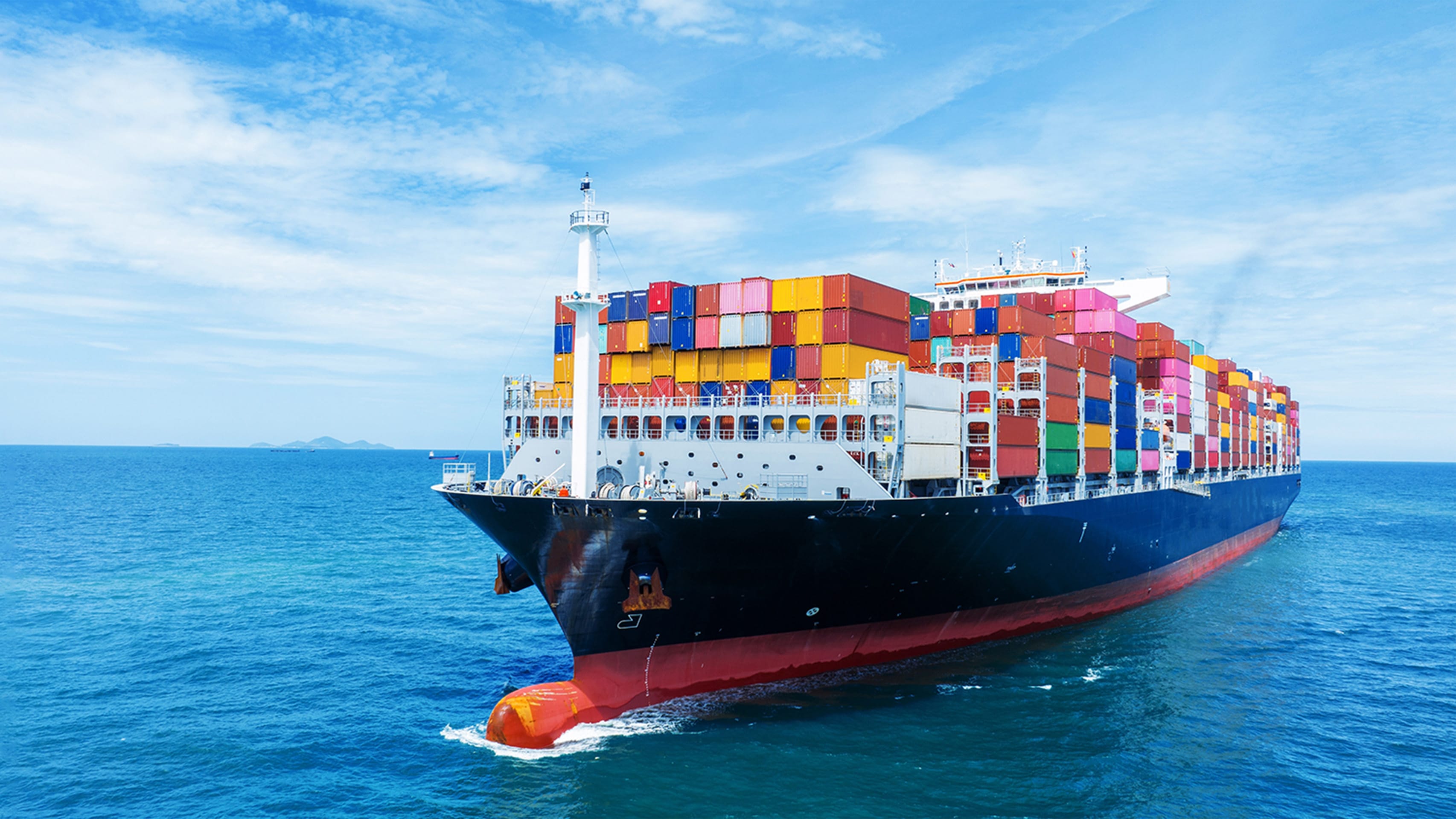While e-fuels may be the long-term answer when it comes to the maritime industry meeting updated IMO decarbonization targets, including net-zero greenhouse gas emissions (GHG) by 2050, additional solutions are required for the short term. Part-load optimization is playing an increasingly large role, but what does it actually entail?
Since the invention and evolution of the internal combustion engine over the past 100 years and more, cars, boats and planes have become faster and travel times have plummeted. We live in a world where deliveries are expected in hours or days rather than weeks or months. As such, a large proportion of the global marine fleet has been designed for fast service speeds, requiring high main engine power.
While this is ideal for voyages at higher speeds, it is not overly efficient in terms of fuel consumption, operating costs or GHG emissions, and we’re beginning to see a shift in mindset. Over the past decade, operating speeds in the maritime industry have actually reduced as an increasing number of shipping companies adopt a process known as slow steaming.
When it comes to shipping, running at lower speeds isn’t simply a case of slowing down and reaping the rewards. Instead, engines and turbochargers need to be tuned for greater efficiency, and this is where part-load optimization comes in.
Optimizing an engine and turbocharger to run more efficiently at lower speeds can deliver several key benefits, including reduced fuel costs, an improved Carbon Intensity Indicator (CII) rating, EEXI regulation compliance, and a reduction in a fleet’s overall carbon footprint. Part-load optimization can also help to reduce costs ahead of the EU Emissions Trading System (EU ETS) being extended to cover shipping.
A recent white paper written by Accelleron and Wärtsilä points out that the key to success with part-load optimization lies in adopting a robust, holistic approach that identifies the most beneficial synergies between engine tuning and turbocharger adaptation. A more holistic approach offers greater flexibility, enabling the tuning to be tailored according to specific customer requirements and vessel operating profiles.
Optimizing the turbocharger for more efficient performance
There are multiple ways that turbochargers can be adapted for part-load optimization, including adjustments to the characteristics of the turbine and compressor.
The turbine area can be reduced in order to generate higher pressure, for example, and a smaller nozzle ring can help to achieve this. For the best results, the turbine rotor and nozzle ring should be jointly retuned. It’s also important to use a specification that shifts the optimal efficiency range towards a lower pressure ratio.
On the compressor side, an increased pressure ratio directly reduces the surge margin of the compressor on 2-stroke engines, with changes required to ensure safe operation. It’s important to verify the surge margin under the new conditions using accurate simulations, with countermeasures required in most cases to return the surge margin to a reasonable value.
Reducing the size of the air diffuser can help, but for the best results it’s necessary to optimize both the air diffuser and the impeller. This increases the surge margin and shifts the optimum efficiency range of the compressor towards a lower pressure ratio.
Engine optimization, such as Accelleron’s EPLO (Engine Part Load Optimization), also results in adjustments to the injection system, exhaust valve and injection timing, along with changes to fuelling and the compression ratio.
Additional ways to reduce emissions at low loads
Accelleron’s latest generation of turbochargers, such as the ACCX300-L series, can also deliver a tangible reduction in fuel consumption and emissions through flexible turbocharger cut-out options during part-load operation.
Turbocharger cut-out means that ship operators can use the number of turbochargers that best suits their expected load patterns and ‘cut-out’ the rest, switching back to all turbochargers as and when required.
There are some challenges to overcome. For example, embracing turbocharger cut-out for multiple turbochargers can often result in maintenance schedules falling out of sync as the turbochargers operate in different conditions. This can be avoided with the ACCX300-L series, thanks to its more flexible servicing options.
According to Simon Ma, Product Manager at Accelleron, the ACCX300-L series enables ship operators to commission maintenance almost whenever required, including during port stays, without the need for dry docking.
“It’s no longer necessary to maintain multiple turbochargers at the same intervals,” Simon explains. “Instead, you can address the different maintenance states thanks to the additional flexibility granted by the ACCX300-L series’ cartridge concept.”
Driving decarbonization through teamwork
With the maritime industry currently in a transition phase as it works towards a more sustainable future, innovation is required to meet decarbonization targets.
A holistic approach that sees Accelleron combine forces with engine manufacturers such as Wärtsilä can help to meet these targets, with solutions such as part-load optimization combining modifications to the engine and turbocharger together so ships can run more efficiently.














